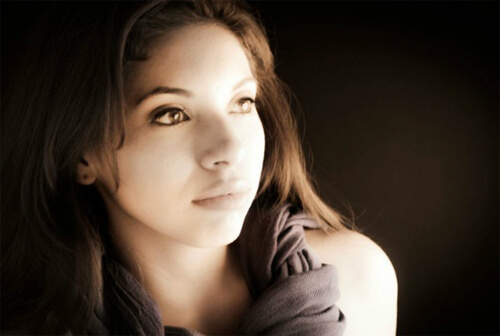Artist Statement: "My childhood was different then most. Growing up with nothing but artists was one thing, but having actually flat lined during a surgery after being diagnosed with a kidney infection changed my life forever. It wasn’t that it left me weak or prevented me from going outside and playing or even going to school with other children but the images that I saw when that moment occurred is what I strive to show in my work today.
A wonderful world where the air was crisp and refreshing, with all of its flowers in bloom, my journey begins down a path with little yellow homes on each side. Beyond the path, a valley flowers appeared. On the right there were rocky mountains so enormous that clouds covered their midsection with their snow covered summits peering through. To my left the sound of the ocean was relentlessly crashing into a cliff. As I crossed my valley of flowers and ascended the cliff, I felt a cool yet, strong breeze off the ocean forcing me back. As I looked up into the vast skies above, I was overcome by the ever so omnipotent clouds with their glorious rays of sunlight beaming through. The feeling of leaping into the breeze and flying towards the light was more then overwhelming. Instead, I greeted it with a smile and made my way back to the valley. Relaxed, laying across its delicate wild flowers, my tranquil body curled up and fell into a deep sleep. Awaking to my mother at my bedside, disappointment overcame me with the realization that it was all just a dream.
Weeks passed, the pain healed but my dream still reigned true. Numerous sketches and endless rants of my new world was all that was real. Having to transition from a world of such perfection to a life of obscurity seemed almost inconceivable. As such, a minor state of depression would set in as my life slowly began to drift back into its regular routine. During this time my only solace came from the amazing work found in books from various art movements and even my favorite childhood cartoons. However, as my healing process dragged on, much of what I know about color (and how I use it today) came from all the extra time spent in my parent’s studio. Watching them work and being surrounded by various mediums helped better understand art as a form of expression. This would inevitably forge my desire to show the world what I had experienced on that fateful day.
As the years pass, my dream still lives within me. My thesis project has only driven my need to share my moment with the world in ways I never thought possible. After much soul searching and numerous critiques, I have come to the realization that my utopia isn’t just a dream; it is in the landscapes that have always surrounded me. Those three minutes had and will always have a tremendous impact on my life. If anything, I learned how fragile life is and to always appreciate the beautiful things in life. Photography has allowed me to show what stands out in my eyes by glorifying it in a photograph. It is the best way that I can communicate what I saw and what I felt at that particular moment. It is the bridge between my past and my present.
Source: Esmeralda Ruiz Website
